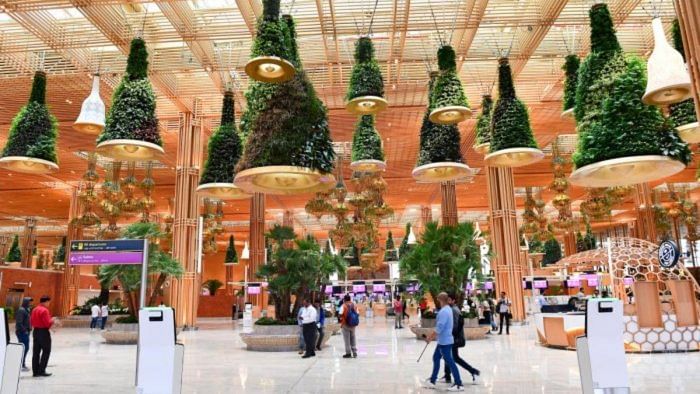
Mediocrity is an integral part of our lives. From potholed roads to plastic junk and leaky toilets to lethargic services, we are compelled to accept and internalise poor life environments without blowing a fuse. But our frustration increases when we see gross aberrations amidst excellence. Two examples--Vande Bharat and T2 terminal in Bengaluru Airport--prove the point.
Vande Bharat trains are the pride of India, with three enhanced capabilities compared to existing coaches: Speeds up to 180 kmph, distributed locomotive power across the train, eliminating an engine in front, and conveniences such as shake-free suspension, swivel seats, and GPS. While these are commendable, speeds are not visible, and distributed power is not leveraged. Speeds are restricted due to track conditions to less than 110 kmph in Kerala or 130 kmph on most other routes. In addition, since it trails other trains running at lesser speeds, all of which cannot be looped to the side to permit overtakes, the slow train sets the overall speed. Net result? The train fails in the basics and averages just 83 kmph, less than half its capability. In comparison, the Gatimaan Express, introduced seven years ago between Delhi and Jhansi, averages 91 kmph. Lack of speed cannot be compensated by sleek looks and swivel seats. What can be done to leverage the capabilities of Vande Bharat?
Strengthening tracks, accelerating other trains, and laying additional lines will take time. Meanwhile, distributed locomotive power can be exploited. Many towns require direct connections with each other. This can be achieved only by running individual trains between every pair of cities, which is impractical and suboptimal. A more elegant and efficient method is to run train sets with segments comprising a few coaches per segment, assigned to each destination. For example, from Bengaluru, passengers in the Chennai direction board the forward portion of eight coaches, and passengers in the Thiruvananthapuram direction board the rear set of eight coaches. At the branching-off junction at Jolarpet, the central link is decoupled, and the forward section proceeds to Chennai and the rear to Thiruvananthapuram. Decoupling is instantaneous, and there is no shunting engine with a slow attach/detach process. Individual segments are good to go on their own in any direction due to distributed power and controls at both ends. More complex arrangements involve segments from many cities combining and detaching successively at stations en route to many other cities. This is prevalent in Europe and elsewhere.
The second example is the recently opened T2 air terminal in Bengaluru, which is outwardly a futuristic creation. Environmentally advanced, visually breath taking, and with ample capacity, it fails to meet simple but crucial needs. The distance from the drop-off point to the boarding gates is perhaps double that of T1, with very few buggies and a near total absence of travellators. The weak, the old, and the very young must trudge over half a kilometre between the pick-up and drop-off points and the gates. Passengers arriving in hundreds every 10 minutes must locate their pickup vehicles. In the absence of a multi-tiered parking lot very next to the terminal, as in Delhi, there is chaos at the pick-up point where arriving passengers and pick-up vehicles cannot be easily synchronised. This will worsen when passenger traffic reaches full capacity. Another basic but critical need for arriving passengers is a toilet facility just after arrival. Through some inscrutable logic, passengers have to travel a long distance before they reach the first facility.
These two examples show that sometimes cosmetics override the basics. Swanky food courts, ornamental chandeliers, impressive facades, green buildings, and rain forest-type creations may add to the image but fail to address fundamentals. While accommodating all requirements, the planners appear to have taken passengers as incidentals in this eco system.
(The writer is an engineer and automotive industry veteran.)